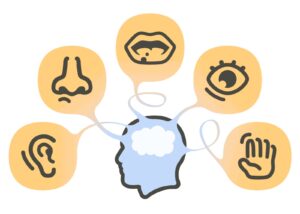“I was told by my previous physical therapist that I would end up hating them by the end of my treatment.” I encountered this statement from an elderly patient last week. This patient underwent a total hip replacement, shortly followed by a fall resulting in a fracture and surgical fixation of her femur. During our initial conversation, the patient hinted that she anticipated our care to cause significant discomfort. She had this expectation set by a previous clinician. But why?
Patient expectations play a significant role in predicting treatment outcomes. Following this encounter, I shared the patient’s quote on my Facebook profile. I soon received various responses from physical therapists and students, some expressing dismay while others showed support for the therapist who set that expectation. “How could anyone condone such a statement?” I pondered. Well, it’s likely not entirely their fault. It reflects a deficiency in the emphasis of their education, which heavily favors anatomical solutions over interpersonal interaction. I intend to delve deeper into this topic in a subsequent post.
For those interested in my initial concern… and for those who treat patients… In 2011, an article in Pain shed light on the impact of presurgical expectations on postoperative outcomes in individuals undergoing total knee arthroplasty (TKA). The study assessed:
- Pain and function using the WOMAC scale
- The influence of comorbidities on outcomes
- Pain-related fear of movement using the Tampa Scale for Kinesiophobia
- Depressive symptoms using the Patient Health Questionnaire
- Expectations through four queries (“How likely is it that one month after surgery; your pain will decrease? your sleep will return to normal? you will resume your household responsibilities? you will engage in social and recreational activities again?”)
- Pain Catastrophizing using the Pain Catastrophizing Scale. The authors discovered that psychological factors significantly influenced the prognosis of postoperative pain severity and function following total knee arthroplasty. Presurgical pain catastrophizing predicted the poorest recovery, along with fear of movement due to pain and depression. So, should we instill an expectation of pain? Should we inform the patient that they should anticipate disliking us? No. Such language reflects a disregard for the psychosocial factors that impact outcomes. Do you like the article? Read also about “Are you a blue or a red light?“

Cultural Interdependence In 2014, I introduced the concept of cultural interdependence to describe the influence of society and culture on pain perception. Around the same time, Dr. Mick Thacker of Kings College proposed a definition of pain: “an embodied element of suffering encapsulated by an experience of the person within the society and culture in which they live.” To better educate patients, we need to redefine and reeducate them about why they may experience knee pain without setting the expectation that we will exacerbate their discomfort. I presented the following sequence of variables that may influence pain before and after knee replacement surgery:
- A cultural belief linking “arthritis” with “pain.”
- The practitioner’s language to the patient (e.g., “Your knee is the worst I’ve ever seen…”)
- Overuse of diagnostic imaging, allowing patients to visualize their “severe” arthritis.
- Provocation of pain by the practitioner.
- Healthcare reimbursement based on procedural codes, which incentivizes certain treatments.
- Societal perception of healthcare providers’ abilities.
- Reinforcement of beliefs by family and friends.
- Cultural beliefs about external factors affecting symptoms, such as the weather.
- Administration of cortisone injections for non-inflammatory conditions like osteoarthritis.
- Cumulative influence of the above factors on the patient’s perception of their condition.
You can read more about this topic on the Wikipedia page.




